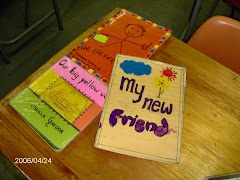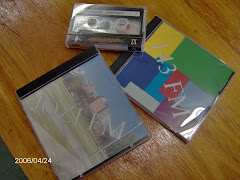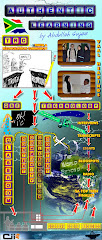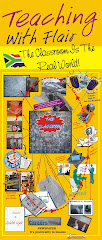MOTHER EVIL
Abdullah MoollaHigh in the sky, like superman I fly
Free from worry, no need to be sorry
I feel so strong, definitely it can’t be wrong
My source of pleasure, spending without measure
Secrecy’s the name of the game, not sure if it will land me in the hall of fame
If I’m ever seen, nobody would’ve sniffed where I’d been
In minutes its over, tomorrow I’m a roamer
My quest I repeat, in a world of non-existent defeat
Normal or Abnormal? Real or Fake? Dead or Alive? Human or Animal?
The 20th century has seen the creation and rise of inhumane forms of “entertainment”, “recreation” and “fun”. The production and trade of one of these forms serves as the backbone of many an economy, it funds major conflicts and is the daily bread of millions. To the leaders and the commoners alike. The vicious cycle of its usage corrupts the virtuous, breaks the united, kills it victims, grieves the innocent and destroys society. None is safe from its inescapable grip. It is the Devil’s Revenge Upon God’s Servants, Drugs!
The Drug TradeThe drug trade is very secretive in nature and can be very dangerous. It is worth trillions of dollars and spans every continent. The Americas top the leader board with continental Asia close behind, leaving Africa in its wake while the scraps go to Europe. Lands yielding the best crops are highly disputed territory, which has led to battles between “Drug Lords”, particularly in South America. Drugs are smuggled from their country of origin to various parts of the world, mainly by ship. “Difficulties” are created by government securities who scrutinize all imports. These are evaded by bribes and other violent means. This automatically causes a rise in price of drugs as it filters through from smugglers to consumers.
Various factors play a role in price fluctuations. They include country of origin, quality and potency. The danger of smuggling drugs in vast quantities is grave. This therefore creates shortage of supplies due to high demand. Addicts/Dealers then resort to manufacturing their own drugs in make-shift production sites that take the form of garages, homes and deserted buildings. Poisons, solvents and adhesives are all compounded to produce the virtual same high as conventional drugs. These drugs carry worse dangers to the human body and can cause death instantly. Sources of traditional drugs include the “Golden Triangle” (where Myanmar, Laos and Thailand meet), Mexico, Columbia, China, Pakistan and the Middle East. There are no age, intellectual, power or wealth barriers when drugs cloak society. However, its presence and consumption is more pronounced in the younger sector of the society and there are various that could explain the same. Namely,
† Boredom. Nothing better to do, why not have a go?
† Curiosity. It sounds interesting; why not see what it makes you fell like?
† Peer Pressure. Being left out isn’t a “comfortable” feeling.
† Rebellion. Venting one’s anger at authority.
† It blocks out physical pain and in certain cases albeit to a limited extent physiological pain.
Considering the constrained financial position of the younger generation, they usually get drugs in small quantities at first from friends, older siblings or relatives. Drugs are not “pushed” out into society but “pulled” in by the users. This takes place in various ways, for example, one person gets hold of some drugs and other young people scrounge off these drugs, ask them or are thankful to be offered some. Another way adopted is that a group of young people pool their money and one of them, who knows a drug dealer/peddler, buys for the group.
Many youth are introduced to their first “hit” at a rave or at a nightclub.
Venues, whose “hidden attractions” are the substances that add spice to the music. As a matter of fact, rave music is barely understood without being under the influence of some substance or the other. Drugs keep the clubbers rolling in while movies do the advertising.
What are drugs?
The drugs under discussion are defined simply as substances that influence the nervous system. They are classified generally as,
Most harmful: Heroin, morphine, opium and other narcotics; cocaine, a powerful, dangerous stimulant and its relative, crack; hallucinogens, such as mescalin and LSD; and injectable amphetamines, such as methedrine.
Less harmful: Narcotics such as codeine and cannabis (marijuana); stimulants of the amphetamine type, such as Benzedrine; and barbiturate sedatives.
Least harmful: Milder drugs of the amphetamine type.
“Designer Drugs”, for example ecstasy, are usually modifications of the amphetamine molecule, altered in order to evade the law as well as for different effects, and many times more powerful and dangerous.
[The above classification is very concise, for greater detail, consult an encyclopaedia]
Drug abuse can be understood better by studying the substances involved, their content, street names, method of administration, short and long term effects as well as the dependency process of an addict. Hundreds of substances are abused out on the street, making it very difficult to draw up/asses the above-mentioned information for each drug.
In order to analyse or treat an addict it becomes even worse, for addicts tend to abuse more than one drug at a time in continuous pursuit of a ‘higher’ high. Inroads have been made in this field and an over view of the observations of some of the most common drugs are presented below;
Cocaine
Cocaine is derived from the leaves of the cocoa plant, which is cultivated mainly in South America. It is considered instantly addictive with severe addiction often two weeks after initial use. Its street names are Coke, Crack, Blow, Snow, Stardust, Nose Candy, Flake, C, Heaven Dust, Rocks and Lady White.
Cocaine is often diluted by dealers before it reaches the end-user in order to increase its bulk, and therefore increase profits. For this, corn starch, talcum powder and sugar are used. Purity is never assured which often results in overdosing. Cocaine in powder form is snorted, in rock form is smoked or injected as a mixture containing heroin.
Some of the short term effects of cocaine are Euphoria, over confidence, increase in body temperature, accelerated breathing and blurred vision. Prolonged usage results in paranoia, insomnia, severe depression, weight loss and hallucinations. Large doses cause violent behaviour and heart failure.
Heroin
Heroin was developed as a non-addictive alternative for Morphine at the end of the 19th century. Its name comes from the German word, heroisch-meaning heroic or powerful.
It is commonly known as Brown Sugar, Elephant and Dragon. Heroin is administered by injecting it into the veins, its powder is snorted and fumes are smoked in a complex way, called ‘chasing the dragon.’
Heroin causes an instant thrill once it enters a person’s body. It causes a decrease in heart rate and body temperature. Other effects of heroin include impaired concentration, drowsiness, decrease in appetite and itching skin. The long term effects of heroin are: impaired judgement, weight loss, ulcers and sores, liver and kidney damage. An overdose can cause death.
Designer Drugs
These are versions of restricted drugs modified in order to create a short term immense high and super-human energy. Examples of designer drugs are LSD, Ecstasy, Ice & Speed. They are extremely dangerous and have a strong potential of an overdose.
LSD (Lysergic Acid Diethylamide)
LSD is a white, odourless powder that dissolves in water and is the most powerful hallucinogen available. It is also called Acid, Animal, Beast, Black Star and California sunshine. LSD alters a person’s perception, i.e. he sees and hears things that don’t exist. Prolonged usage produces fear, anxiety, sleeplessness, several different emotions at once, flashbacks and loss of appetite. Violent or hazardous behaviour including self mutilation is also one of the dangers associated with the usage of LSD.
Ecstasy
Ecstasy produces a mixture of central stimulants and psychedelic effects. Ingestion causes dry mouth, jaw clenching, muscle aches and increased blood pressure. Higher doses cause visual hallucinations, drug craving, paranoia and depression.
Addicts are con-artists and tricksters who can hide their habit for years. For this reason, unsuspecting teachers and parents are immensely shocked when the addiction of someone close is discovered. Early detection can curb the shock and can help to solve the problem.
So, how can you tell if someone has a drug problem?
The key is to look for change. It could be in a person’s physical appearance, or in a person’s behaviour or personality, or a change in all three.
Here are some of the symptoms to look out for:
Physical symptoms:
1. Change in appetite and unexplained weight gain or loss.
2. Running nose, hacking cough.
3. Red and watery eyes, change in usual pupil size, blank stares.
4. Sleep disturbance or unusual laziness
Behavioural/Psychological symptoms:
1. Secretive or suspicious behaviour.
2. Unexplained need for money.
3. Change in friends or hangouts.
4. Sleep in overall attitude or personality with no other identifiable cause.
Once a person is drawn into drugs, he becomes an embodiment of evil and filth, and will stop at nothing to sustain his addiction. If he has money, he’ll buy, if he doesn’t, he’ll steal. He turns into a beast, violently abusing everyone in his way. No sin is left uncommitted and as in many cases an addict leaves the fold of Imân. Nobody is united in the deadly drug game. Everyone becomes ferocious wolves preying on their rivals. It’s only about drugs and money, while society retrogresses to the pits of humiliation and disgrace.
All this is precisely what Allâh has explained, O those who believe! VERILY INTOXICANTS AND GAMBLING, alter stones and (divination by) arrows are an abomination-shaytâns handy work. Shun such (abomination) that you may prosper. Shaytân wants only to excite enmity and hatred between you with intoxicants and gambling, and hinder you from the remembrance of Allâh and from salâh. So, will you not then abstain? (Ma’ida 590/91)
What can be done to solve the problem?
In order to be released from the grip of addiction, a person has to come to an immovable decision to leave drugs totally forever. Without this, there is a great danger of relapse (falling back into the habit). Rehabilitation is in many cases the best option despite the low success rate. During rehab a concerted effort should be made upon the addict’s Imân which strengthens his sick soul and will draw him closer to Allâh. A rehabilitated person should not be looked down upon but rather as somebody who as been given a new life.
“Every intoxicant is forbidden …” (Abu Dawûd). In his weakness, man displays his vulnerability in the face of the ‘fun’, ‘enjoyed’ by others. His greedy nature causes him to fall headlong into the prohibited, taking him away from the purpose of his creation. “AND INDEED WE HAVE HONOURED THE CHILDREN OF ADAM AND WE HAVE CARRIED THEM ON LAND AND SEA, AND WE HAVE PROVIDED THEM WITH GOOD/LAWFUL THINGS, AND HAVE PERFERRED THEM ABOVE MANY OF THOSE WHOM WE HAVE CREATED WITH A MARKED PREFERMENT” [Al-Isrâ 17:70].
In the light of the above verse, it does not behove man to lower himself to a level lower than animals, if there is.
It was a drugged individual







No comments:
Post a Comment